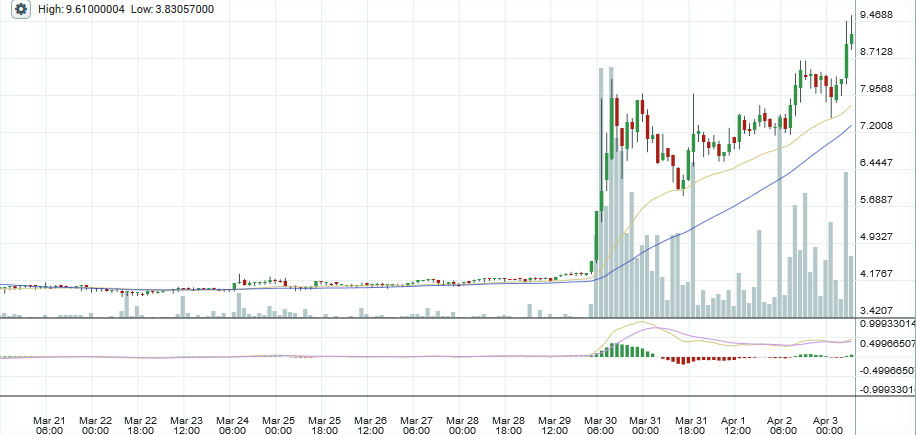Litecoin Price Doubles, Thanks to SegWit?
Litecoin has more than doubled in the past five days, rising from around $4.30 to just under $9.50 after months of no activity. The reason appears to be segregated witnesses (segwit), a protocol upgrade that facilitates the Lightning Network and, potentially, sidechains.

Segwit is currently going through the activation process, seemingly stalling for two months, but has now surged to just under 60% of the network’s hardware share. That is because Litecoin’s biggest pool – F2Pool, which had previously told CCN.com they will signal for segwit, actually began doing so on April the 1st.
They continued to so signal, thus erasing any confusion on whether it was a fool’s prank or otherwise. As such, segwit now needs only around 15% to activate on litecoin as its threshold is 75%.
It is not clear whether they will be able to reach the threshold. LTC1BTC’s founder has come out against segwit, but at near 60% hashrate, segwit activation appears much more likely than otherwise.
If it does activate, the bitcoin copycat will differentiate itself in many ways. Firstly, any future on-chain capacity increases on litecoin would be very difficult to achieve due to segwit’s 4:1 ratio. That is, 4MB blocks allow for an attack vector of up to 16MB, while 8MB blocks allow for an attack vector of 32MB and so on.
Considering that some are arguing even 1MB is too much and capacity should actually decrease to 300KB or so, reaching any sort of consensus on 4MB with an attack vector of 16MB appears very unlikely.
On the other hand, the use of on-chain capacity may be less necessary once LN is implemented as it may take out ordinary payments of $10-$20 from on-chain to LN, allowing for more on-chain space.
However, litecoin has plenty of on-chain space. The currency is barely used with around just 4,000 transactions a day. Litecoiners, therefore, will be able to choose whether they use LN or transact on-chain.
Considering that LN would double charge as hubs require fees on top of fees required by litecoin miners, the network will probably only be used for niche cases, such as vast amounts of sub $1 payments.
LN’s premise on litecoin, therefore, is somewhat different from its premise on bitcoin. In the case of the later, users would in effect be forced to use LN and double pay whether they like it or not. While litecoin’s case is in many ways what big blockers have been arguing – increase on-chain capacity while also implement LN so that bitcoin does not bet it all on red if LN turns out to be very inconvenient to use in practice to the point where bitcoiners leave.
On that later point, if litecoin does activate segwit while bitcoin does not, it may well be the case that some Bitcoin Core developers, especially Blockstream employees, do leave to litecoin with some of their supporters probably following.
That would be one way of resolving the blocksize matter. Bitcoin continues on Nakamoto’s roadmap, litecoin stops being a copycat and goes on its own path of a layered payment network with limited on-chain capacity, while eth continues to focus on smart contracts.
Featured image from Shutterstock.